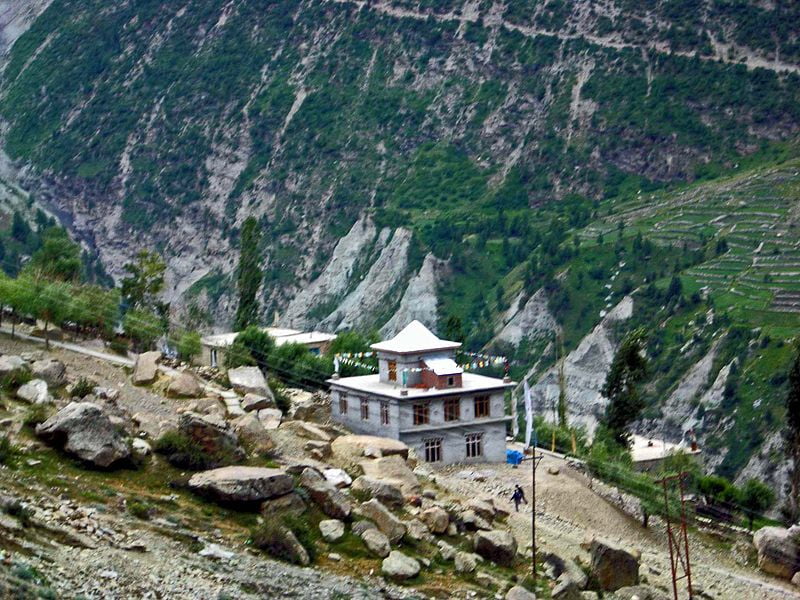Gandhola Monastery is about 18 kilometres from Keylong in Lahaul and Spiti district, Himachal Pradesh, India on the road from Manali, Himachal Pradesh. It is located on a hill above Tupchiling Village at the sacred junction of the Chandra and Bhaga rivers, which together form the Chandrabhaga or Chenab River. The village is at 3,160 m and is famous for its 7-storey tower fort.
Shrine’s History
amazon goldkette 24 karat herren
ua old skool
gorros invierno mujer
telecomando came g117 498f fw
ab1553 adidas
balenciaga sinners hoodie
långa jeanskjolar
grzebień do otwierania zamków
κρεβατια μονα με αποθηκευτικο χωρο και στρωμα
hq8716 Italy
cazadora estilo motero hombre
manico basso 5 corde amazon
casio model calculator
florida state jersey
The monastery is said to have been founded by Padmasambhava in the 8th century. It is now connected with the Drukpa Lineage of the Kagyu school of Tibetan Buddhism, but its history long precedes the formation of that sect. According to local tradition and also the terma, the Padma bka’i thang, discovered in 1326 in the Yarlung Valley by Urgyan Lingpa, the site was associated with Padmasambhava. But the site was a Buddhist establishment even earlier than that: A chased copper goblet dated to the first century BCE was found here in 1857 by a Major Hay and is considered to be evidence of Buddhist monks’ cells being located in a cave monastery at that time. The frieze on the vase denotes a chariot procession and is considered one of the oldest examples of metalwork to be decorated in this way in India.
Known as the Kulu Vase, it is now kept in the British Museum.A damaged marble head of Avalokiteśvara also found here, is kept in the Guru Ghantal Monastery itself, and is claimed to date back to the time of Nagarjuna in the second century. This seems to be the only monastery in the region other than Sani Monastery in Zanskar which has a history which is claimed to go back to the era of the Kushan Empire. There is also a black stone image of the goddess Vajreśvarī Devi, and a wooden statue of the Buddha said to have been installed by the monk Rinchen Zangpo, a famous lotsawa (translator of Sanskrit Buddhist texts).
The monastery was originally probably a larger complex of a purely Indian style of which nothing now remains. The present structure is two-storied, 17.3 x 11.6 metres facing the north-west. The Assembly Hall or Wylie: ‘du khang is on the ground floor. In 1959 the monastery underwent extensive repairs and a small pagoda roof of Kangra slates was added in a rather haphazard manner, which is surrounded by the mud roof which covers the monks’ cells and kitchen on the second floor. About 800 years have elapsed since Rana Nil Chand came from Kolong in the district of Bangāl to settle in Lāhul. At the same time Thakur Ratan Pal of the Pal family, a resident of Gond in Bangal, came to Lahul and settled in Tīnan, and named Tīnan Gondala after his first place of residence; and of his family at the present time thakur Hira Chand is alive and the holder of the jagir of Gondala.” Gandhola, like all the Drukpa monasteries in Ladakh and Lahaul and Spiti, owes allegiance to the 12th Gyalwang Drukpa, abbot of Hemis Monastery in Ladakh, who, in turn, owes allegiance to the head of the order in Bhutan.
Architectural Relevance of This Shrine
Gandhola is also famous for its seven-story fort with alternating layers of stone and timber, which was once the seat of the local thakur or chieftain, but is no longer occupied. It is 4 kilometres walk from the village of Tupchilling, in which the monastery is set. It was built by Raja Man Singh, the ruler of the Kulu Kingdom in the early 1700s as a castle for the local Thakur. Still preserved in the dilapidated tower is a prized heirloom of the Thakur family: the ‘sword of wisdom’. Made of thin wires hammered together in the style developed in Toledo in Spain, when it was under the Moors, the sword was given to one of their forefathers by the then Dalai Lama; in Tibetan Buddhism, it represents the battle against religious ignorance, and the divine Manjushri is normally portrayed wielding one. The sword is not on display but is shown if requested.
By Road
The nearest Bus stop is Keylong.
By Rail
The nearest Railway station is Amb Andaura.
By Air
The nearest Airport is Bhuntar Airport (KUU), Kullu, Himachal Pradesh.
